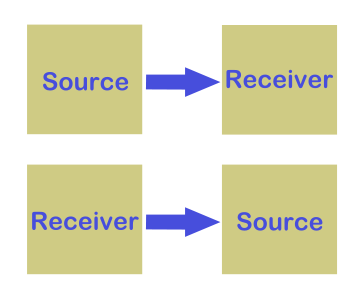process of communication
The communication process involves the sender, the transmission of a message through a selected channel and the receiver.
a) Sender
The Process of communication begins with a sender, the person who transmits a message. The person who transmits the message is called the sender. He may be a speaker, writer or an actor. He must have a clear picture in his mind of, what he wants to communicate. The information passed by him should be concrete.
Example: The branch manager explaining new product lines to the sales force, a computer programmer explaining a new program to a co-worker are all sender of communication.
b) Message
A message is the subject matter of communication. Message could be verbal (written or spoken) or nonverbal (such as appearance, body language, silence, sounds yawns, sights etc.). This might be opinion, attitude, views, suggestions, orders, feelings etc. Ideas are the Heart of communication.
c) Encoding
The sender puts his ideas into words, actions, pictures etc which the other person can understand. This conversion of the subject matter into this symbol is called Encoding.
d) Channel
Channel connects the Sender with the Receiver (i.e.) through radio, telephone, air etc.
- For internal written communication, the media may be memos, reports, posters, electronic bulletin board etc.
- For external written communication, the media may be letters, telegrams, faxes, emails, ads, catalogues etc.
- For oral communication, the media may be staff meeting, face-to-face discussions, teleconferences, audio tapes/video tapes etc.
The choice of channel or medium (written or oral) is influenced by the inter-relationships between the sender and receiver. It also depends upon the urgency of the message being sent. If message requires an immediate answer, an oral channel may be the better choice. But if the message contains complicated details, a written communication is necessary.
e) Receiver
Receiver is the person who receives the message. He may be a listener, a reader or a viewer. He is any person who notices and attaches some meaning to a message.
f) Decoding
The receiver translates the symbols received from the sender into words to get meaningful ideas of the message. This conversion of this symbol into the subject matter is called decoding.
g) Feedback
After decoding, the receiver reacts or responds to the communication send by the sender. This return flow of communication is called Feedback. Feedback is an important component of the communication process, because ultimately the success or failure of the communication is decided by the feedback we get.
